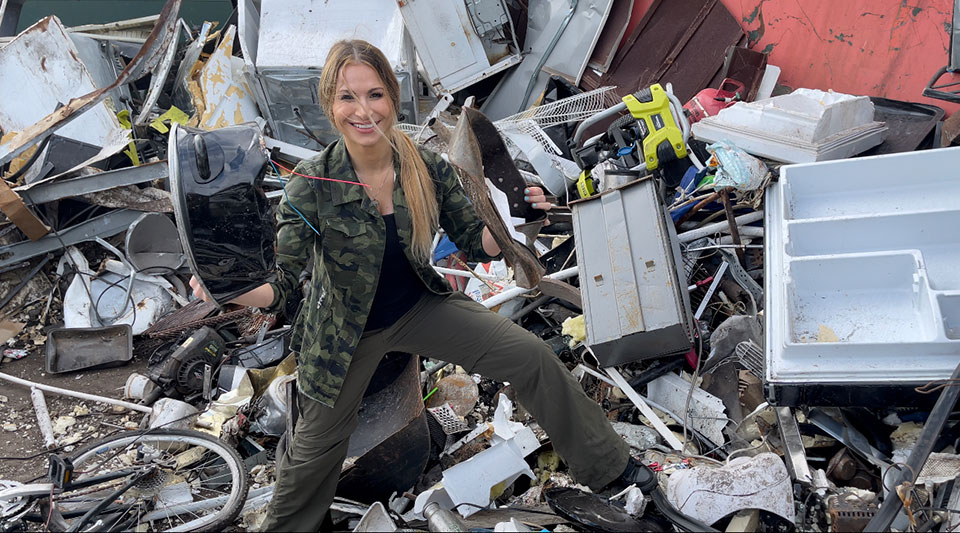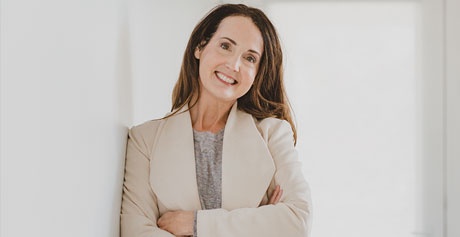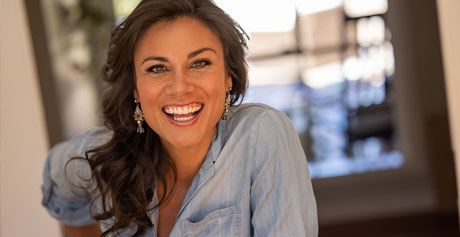Dr. Tracy Fanara: From The Weather Channel to Mythbusters—Insights, Adventures, and the Science That’s Changing Our World!

Q: When did you know you wanted to become an environmental engineer and research scientist?
TF: From the time I was a little girl, I loved animals. After it would rain, I would go to the abandoned train tracks behind my house to catch tadpoles. I was amazed that these creatures could find life in a temporary pool of water, and I was obsessed with watching them grow into frogs. I would have a number of blue cups on my dress-er next to my bed, filled with a couple tadpoles each. My mom didn’t love the fact that I was always bringing random animals inside, but she let me do it anyway. One night while I was sleeping, she came into my dark room to clean while drinking a glass of water. She put the water down on my dresser, picked up my clothes on the floor, then grabbed her water from my dresser and drank it. She walked out of the room, to the hallway, looked down, and saw the blue cup. She started screaming. I started crying because she had eaten my pets. After that, my mom started to go to the doctor a lot, and I felt hor-rible because I was sure it was from drinking tadpoles, but it wasn’t. I didn’t understand what was going on, so a teacher told me a story to give me some insight. She told me how, before I was born, there was an abandoned canal that a chemical company used as a hazardous waste dump site for decades located near where I lived. Once full, they covered it up with soil and sold it to the county for a dollar. The toxic chem-icals traveled through the soil and groundwater after every rainfall and snowmelt. There was toxic sludge seeping through basement walls. There were birth defects and a myriad of other illnesses. To protect the local economy that was tied to the chemical company, the people were told by the county that everything was fine while problems escalated. The relentless efforts of one woman led to one of the most important federal programs that exists. The incident at Love Canal inspired the US Environmental Protection Agency’s Su-perfund Program (a program to clean up hazard-ous waste sites), and it led to my understanding of how everything is connected. What we put into the environment always comes back to affect our health. My mom’s cancer diagnosis in her twenties may or may not have been connected to environmental disaster, but I quickly realized that there were incidents like this all over the world and many more right in my hometown. The more I learned, the more I focused on the compound that dictates the health and safety of wildlife and humans; I focused on water.
How I became an engineer is a strange story. It started with a cold day at Hobart and William Smith Colleges and a voice message from my parents who had moved to Florida. I was so sick of walking uphill through the snow to get to lacrosse practice that I applied to the University of Florida. That summer, I was a camp counselor in Maine when I got a message from my mother that I had received a rejection letter from the University of Florida. I took my transcripts down to UF and knocked on every door that sounded sciencey, and the one person who was there was the chair of the Environ-mental Engineering Department. I had never heard of the major and engineering sounded boring, but the chair, Dr. Paul Chadik, explained that environmental engineers were responsible for protecting and providing water to humans and wildlife, they protected people from natural disasters, and they designed and built solutions to the world’s most pressing issues. Everything came full circle, Dr. Chadik admitted me, and I signed up to be a superhero. I would be rejected by UF two more times. I received all three of my degrees from UF, ranked third in the world at the time I graduated.
To read more of our exclusive interview with Dr. Tracy Fanara, click here.

